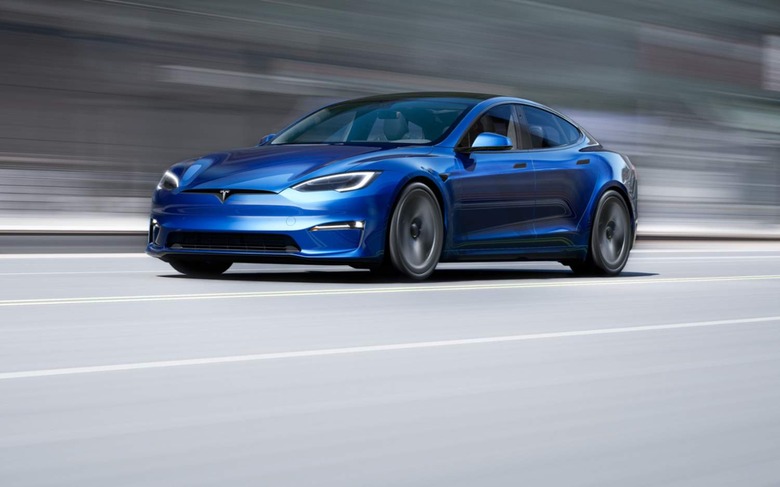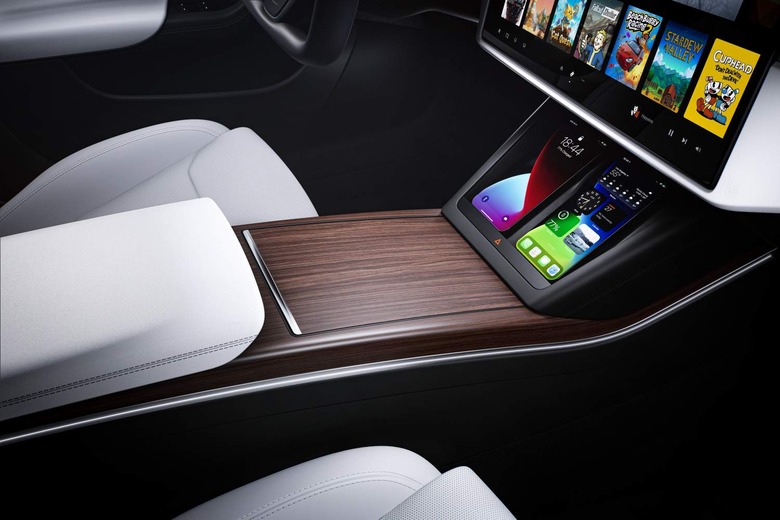Tesla Model S Plaid 0-60: What Elon Musk didn't mention
The Tesla Model S Plaid is mighty fast, but don't expect to hit Elon Musk's big 1.99 second 0-60 mph boast for an impromptu stop sign drag-race. Deliveries of the tri-motor sedan began earlier this month, with a big Tesla launch event at which the CEO made the pitch for why hypercar-shaming EVs are necessary to give electrification a halo. What Musk didn't mention on-stage, though, was the small print.
Certainly, there's a lot to be impressed about here. With its three electric motors – borrowing tech from the latest Model 3 and Model Y, but adding carbon-fiber sleeves and software changes for better performance – it delivers 1,020 horsepower and 1,050 lb-ft of torque.
As well as the sub-2-second 0-60 time, that makes for a 200 mph top speed, Tesla says. On the inside, meanwhile, it packs the automaker's most recent cabin upgrade. That means a multi-screen infotainment system with the same sort of processing power as a PlayStation 5, along with the controversial "yoke" steering wheel.
Nobody is doubting the $129,990 Model S Plaid is fast, then, and with 390 miles of EPA-estimated range it doesn't sacrifice usability either. Thing is, there are a fair few provisos to bear in mind if you actually want to try that fiendish acceleration, as MotorTrend discovered.

Most significant is the amount of time it takes to get the EV ready. For that headline 0-60 time, the Model S Plaid needs to be in Drag Strip mode: you access that through the central touchscreen. It apparently takes 8-15 minutes to precondition the powertrain after that, chilling the motors and either heating or cooling the battery.
Then, you activate launch control mode. That involves pressing the brake hard with your left foot, the accelerator all the way down with your right, and then waiting a little longer. It takes about 9 seconds for the EV to squat its nose down into what Tesla describes as its "cheetah stance" for maximum aerodynamic efficiency.
Once the "Launch Control Ready" message pops up, you release the brake and hurtle forward. Road surface depending, Tesla's boast is accurate, and repeatable. "We've never tested a car so robotic in its consistency," MotorTrend says.

That road surface part, though, is the other proviso. The best results – and indeed the track Tesla apparently demanded be used – has been preconditioned with VHT, a type of resin that leaves the surface far more grippy and thus better suited to performance trials. The automaker proved reluctant to allow non-VHT testing, arguing that Plaid owners will probably only ever try Drag Strip mode out at, well, a drag strip.
When tested on more normal asphalt, however, 0-60 mph arrived in 2.07 seconds. If you skip the one-foot of rollout – a generally-accepted measure in speed testing, where the vehicle is actually moving at the point you start timing, rather than from a standstill – it takes 2.28 seconds.
The final verdict is that, regardless of a few tenths of a second here or there, Tesla's most fastest EV is astonishingly proficient. Indeed it's almost a shame that the automaker – and Elon Musk – were so fixated on the sub-2-second boast, given it now runs the risk of overshadowing the legitimate achievement that the Model S Plaid represents. A car that absolutely delivers on Musk's threat of electric outperforming big-engine supercars and hypercars, and for a fraction of their price.
Now what remains to be seen is how quickly Tesla can pivot this success into delivering its even more aggressive promises for the new Roadster, production of which is scheduled to begin next year.
